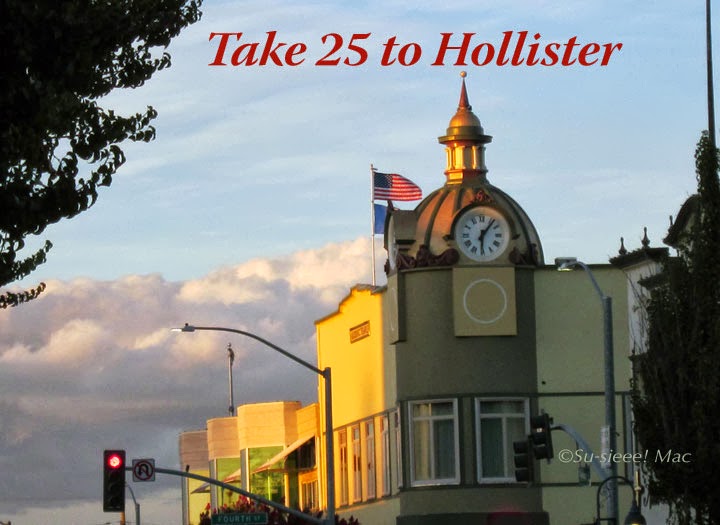
Today, the two-story commercial building at the southeast corner of San Benito and Fourth Street is a church. Originally, the building at 401 San Benito Street was a grocery store. It was built in 1907 to replace the first building destroyed in the 1906 Earthquake. It is a contributing building to the Downtown Hollister Historic District, which means that the owners cannot demolish it until certain measures are met. The storefront was remodeled for a modern look in the 1970s.
This historic building is one-of-a-kind in Downtown Hollister. It has two square corners, which remind me of castles. The fancy parapet at top of the roof has a cheerful curved middle section, which makes me think of the Three Musketeers. And, the balcony on the second floor, well, that brings Romeo and Juliet to mind.
By the way, that balcony is a copy of the original one that had gone missing at one point in time. The copy was made from original timbers, according to Welcome to Historic Downtown Hollister, a walking tour pamphlet by Sharlene Van Rooy.
I'm hooking up at Sundays in My City, hosted by the Unknown Mami. Come check out posts of other cities around the world by clicking here.















